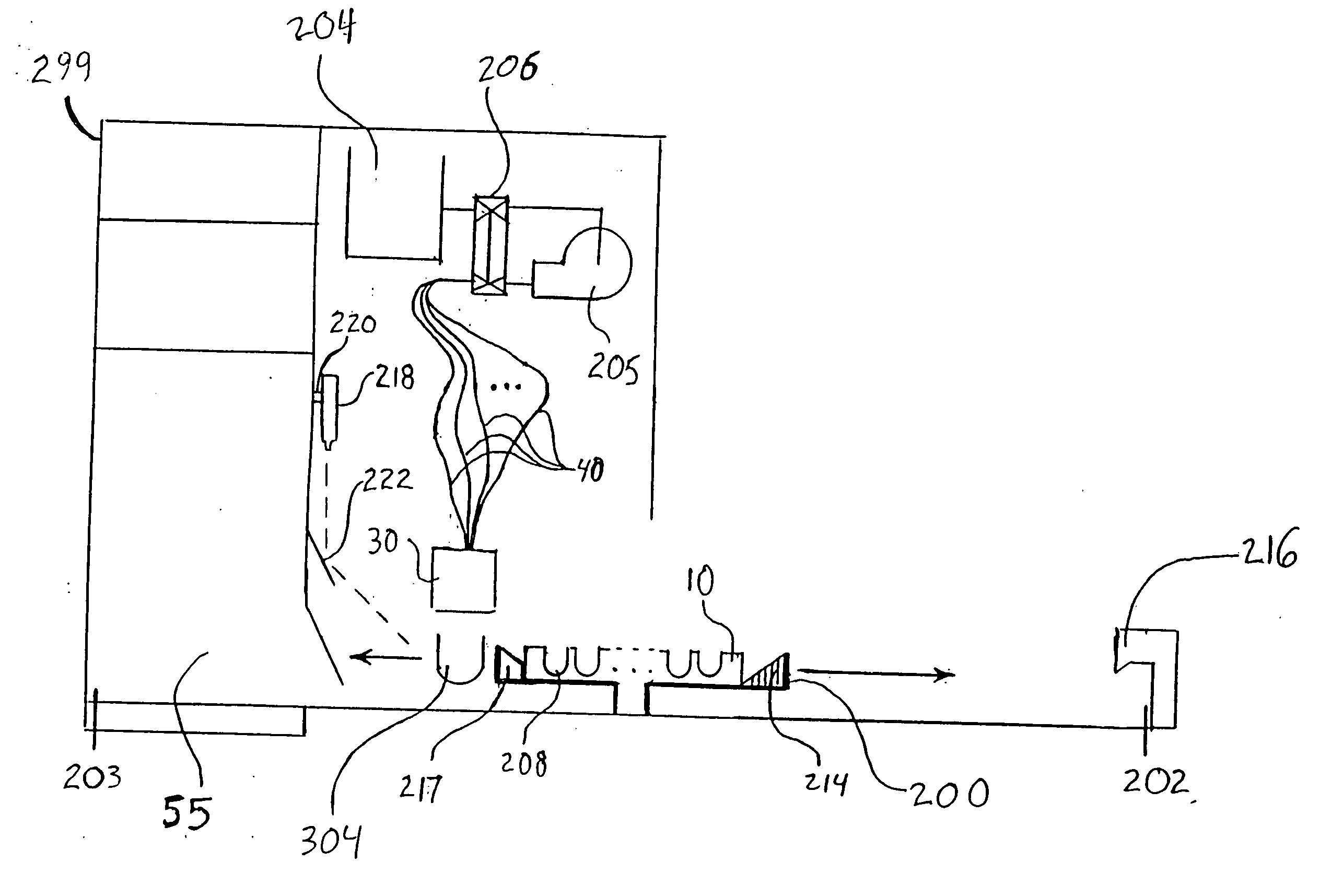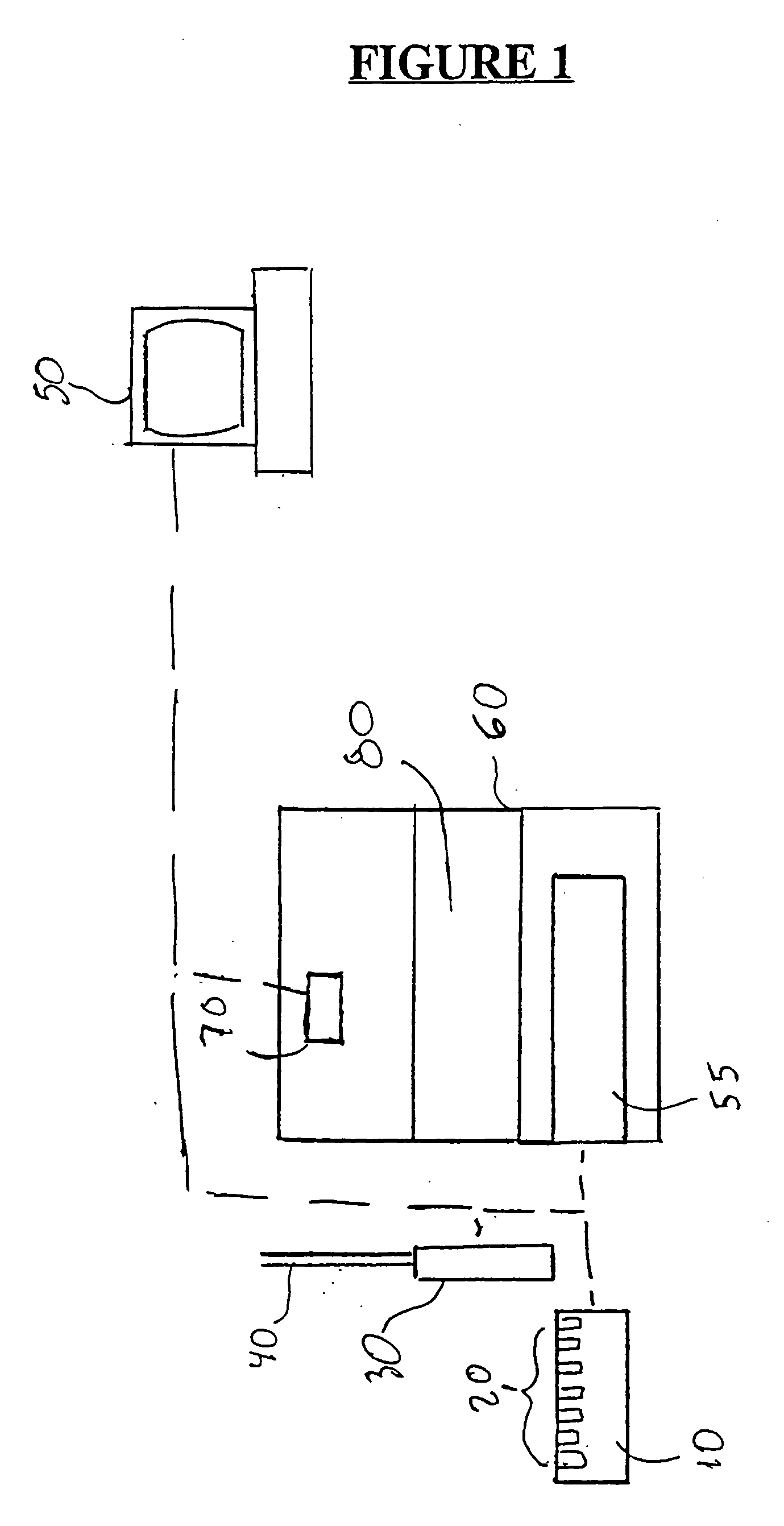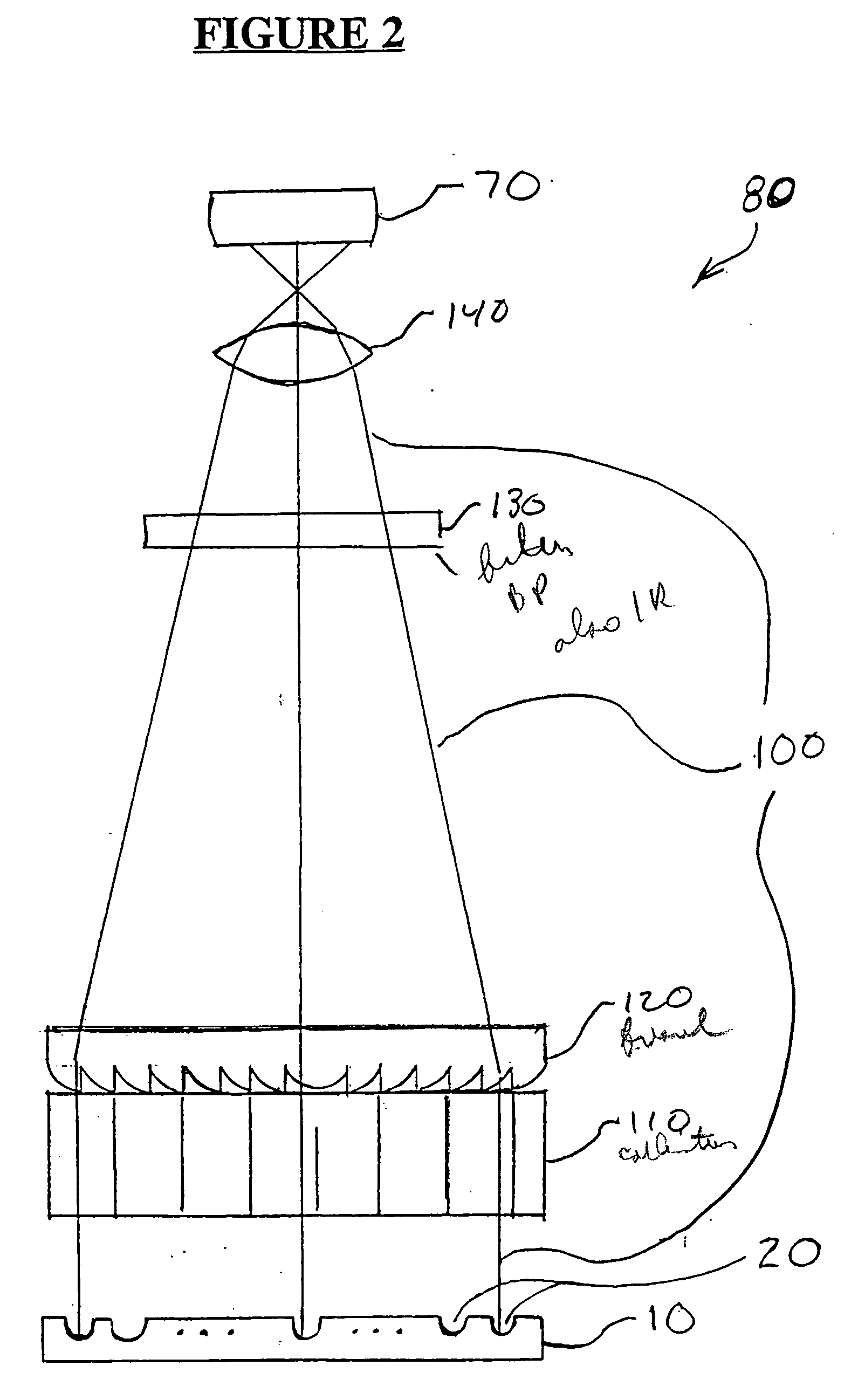Luminescence detection workstation
a workstation and luminescent technology, applied in the direction of fluorescence/phosphorescence, instruments, chemical methods analysis, etc., can solve the problems of stray light from external light sources or adjacent samples, need for high-speed processing, and chemiluminescence or bioluminescence may diminish, so as to minimize crosstalk and minimize crosstalk
- Summary
- Abstract
- Description
- Claims
- Application Information
AI Technical Summary
Benefits of technology
Problems solved by technology
Method used
Image
Examples
example 1
Purified cAMP Quantitation
[0091] cAMP standards were serial diluted and added to a 96-well assay plate with alkaline phosphatase conjugated cAMP and anti-cAMP. Plates were processed with the cAMP-Screen™ protocol and imaged for 1 minute on the NorthStar™ 30 minutes after addition of CSPD® / Sapphire-II™. A sensitivity of 0.06 pM of purified cAMP is achieved with cAMP-Screen™ on the NorthStar™ workstation. The results are depicted in FIG. 8.
example 2
cAMP Induction in Adrenergic β2 Receptor-Expressing C2 Cells
[0092] Adrenergic β2 Receptor-expressing C2 cells were plated in a 96-well plate (10,000 cells / well) and stimulated with isoproterenol for 10 minutes. cAMP production was quantitated in cell lysates using the cAMP-Screen™ assay. The assay plate was imaged for 1 minute on the NorthStar™, 30 minutes after addition of CSPD® / Sapphire-II™. Increasing cAMP levels were detected on the NorthStar™ from the stimulated adrenergic receptor. The results are depicted in FIG. 9.
example 3
Luc-Screen™ Reporter Gene Assay in 96-, 384- and 1,536-Well Format
[0093] pCRE-Luc-Transfected cells were seeded in 96-, 384- and 1,536-well plates, incubated for 20 hours with forskolin, and assayed with the Luc-Screen™ system. PCRE-Luc contains the luciferase reporter gene under the control of a cAMP response element (CRE). Forskolin induces intracellular cAMP production through the irreversible activation of adenylate cyclase. All plate formats demonstrate comparable forskolin-induced cAMP levels. The results are depicted in FIG. 10.
PUM
 Login to View More
Login to View More Abstract
Description
Claims
Application Information
 Login to View More
Login to View More - R&D
- Intellectual Property
- Life Sciences
- Materials
- Tech Scout
- Unparalleled Data Quality
- Higher Quality Content
- 60% Fewer Hallucinations
Browse by: Latest US Patents, China's latest patents, Technical Efficacy Thesaurus, Application Domain, Technology Topic, Popular Technical Reports.
© 2025 PatSnap. All rights reserved.Legal|Privacy policy|Modern Slavery Act Transparency Statement|Sitemap|About US| Contact US: help@patsnap.com



